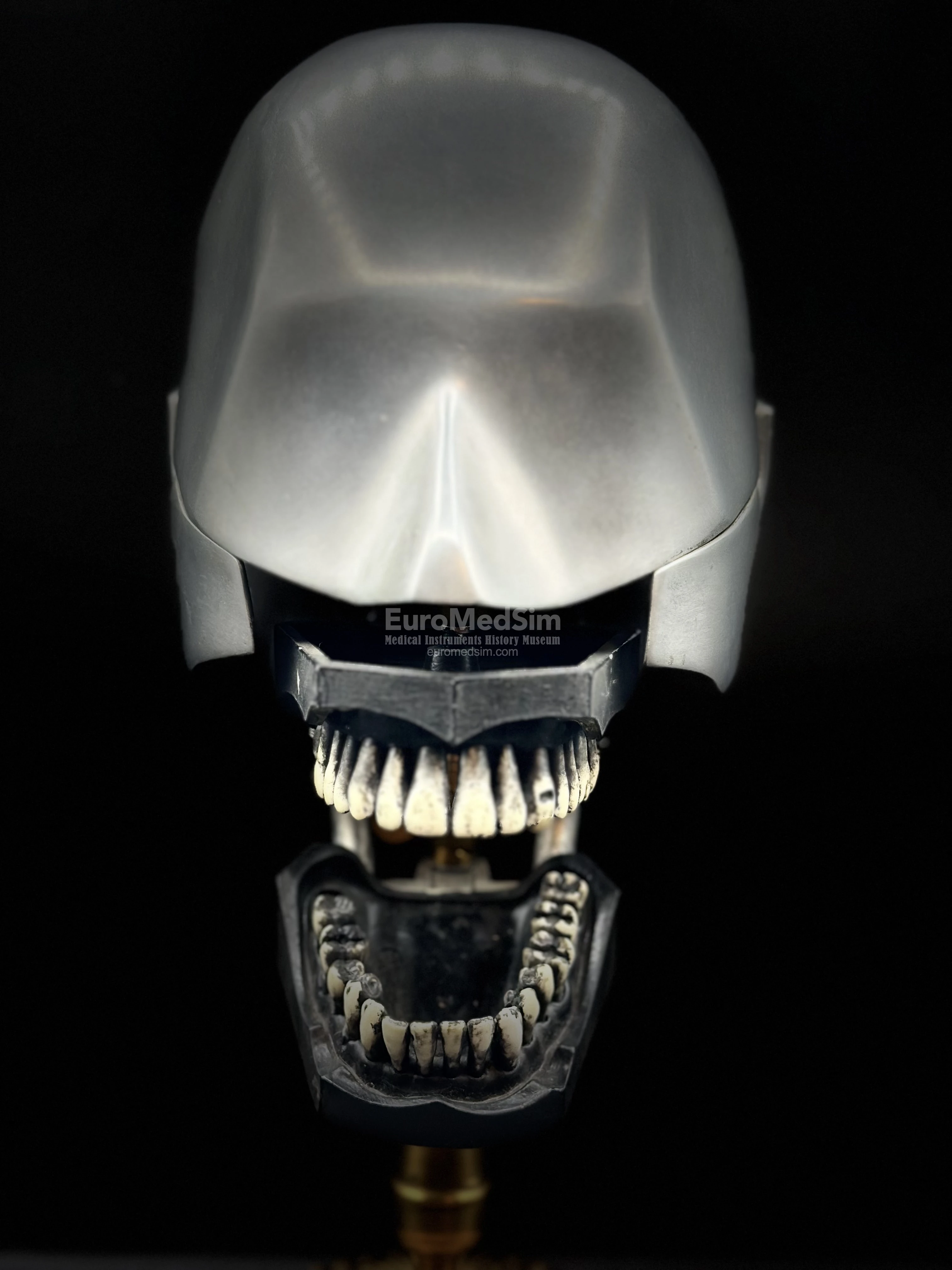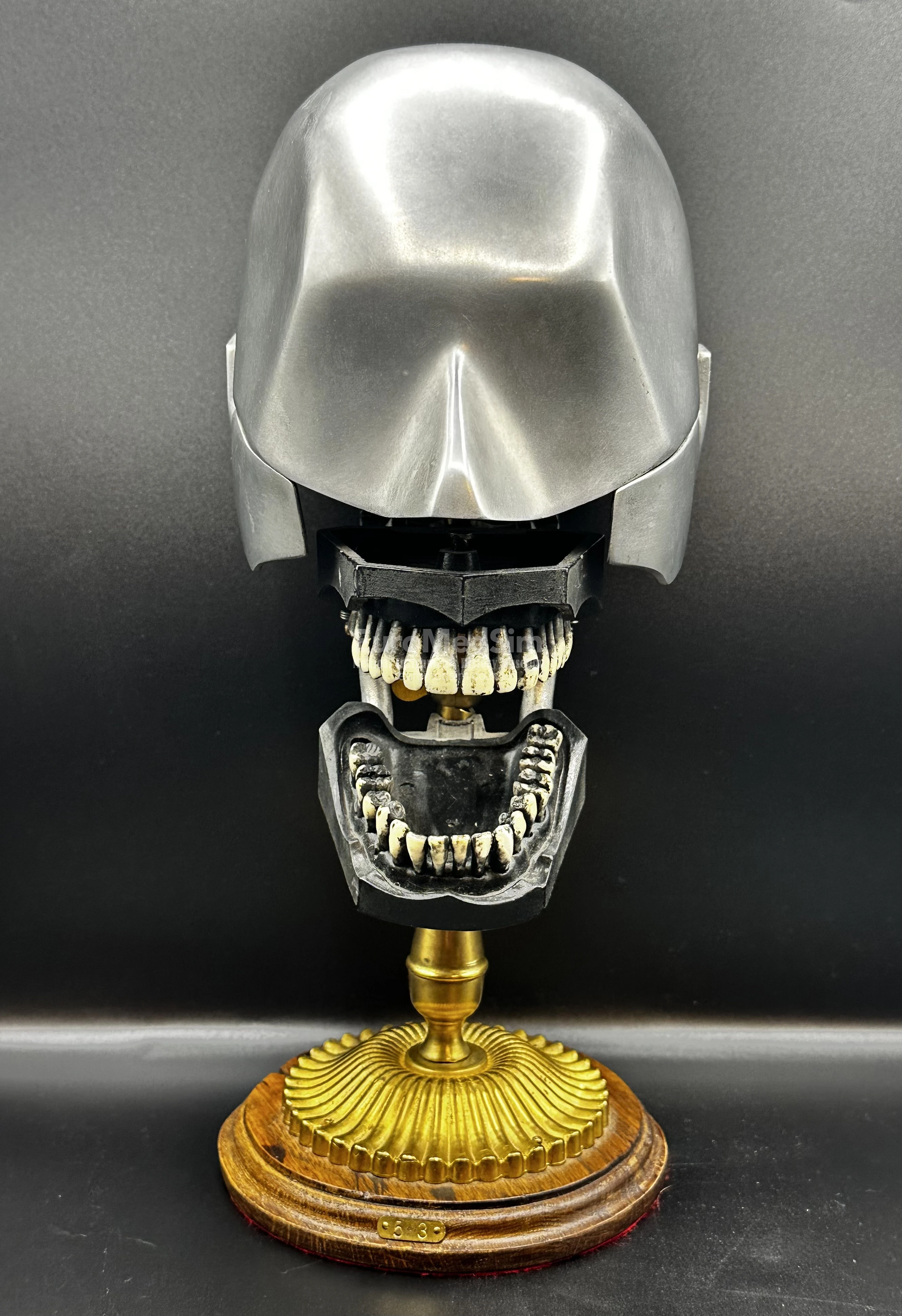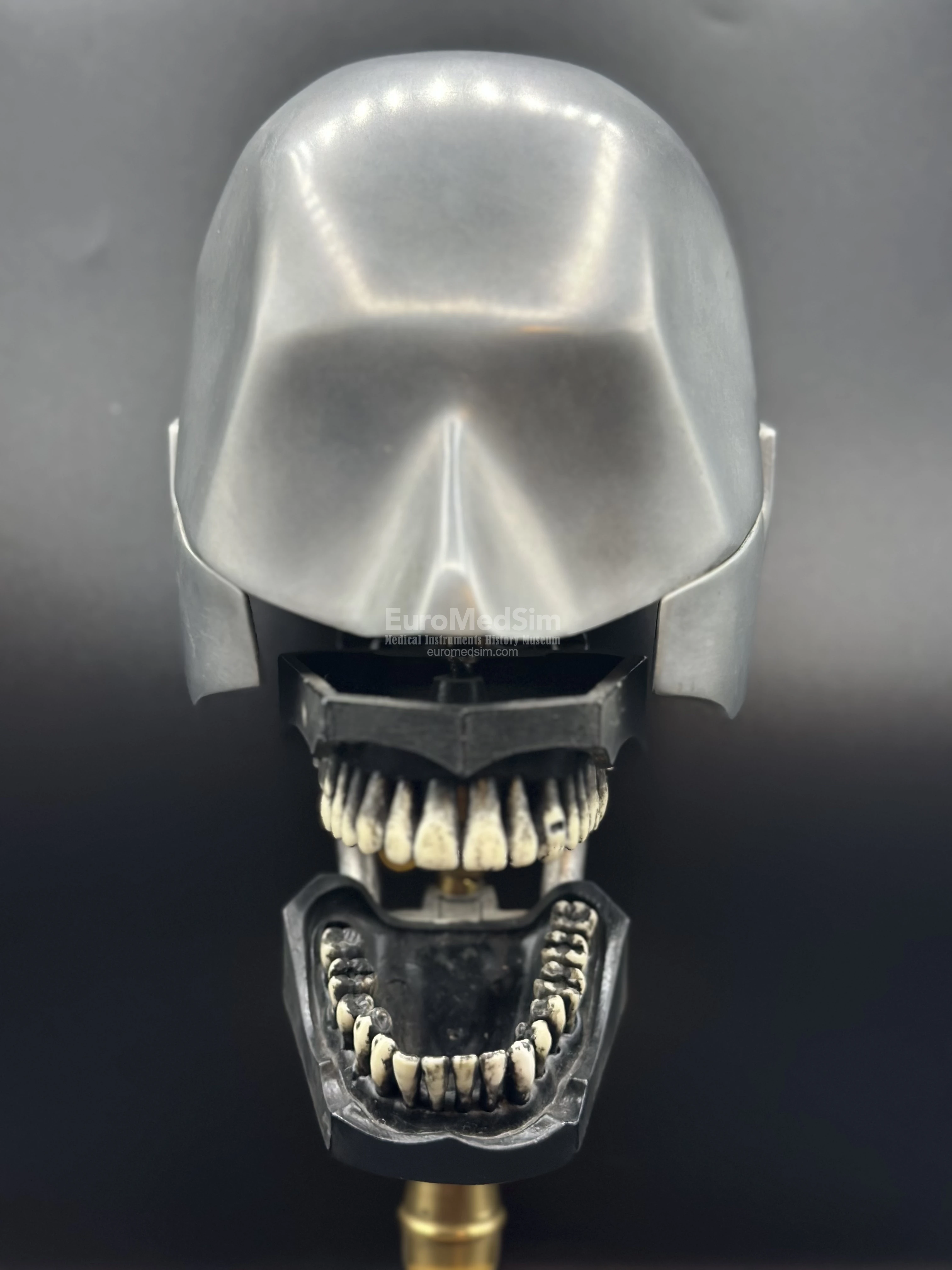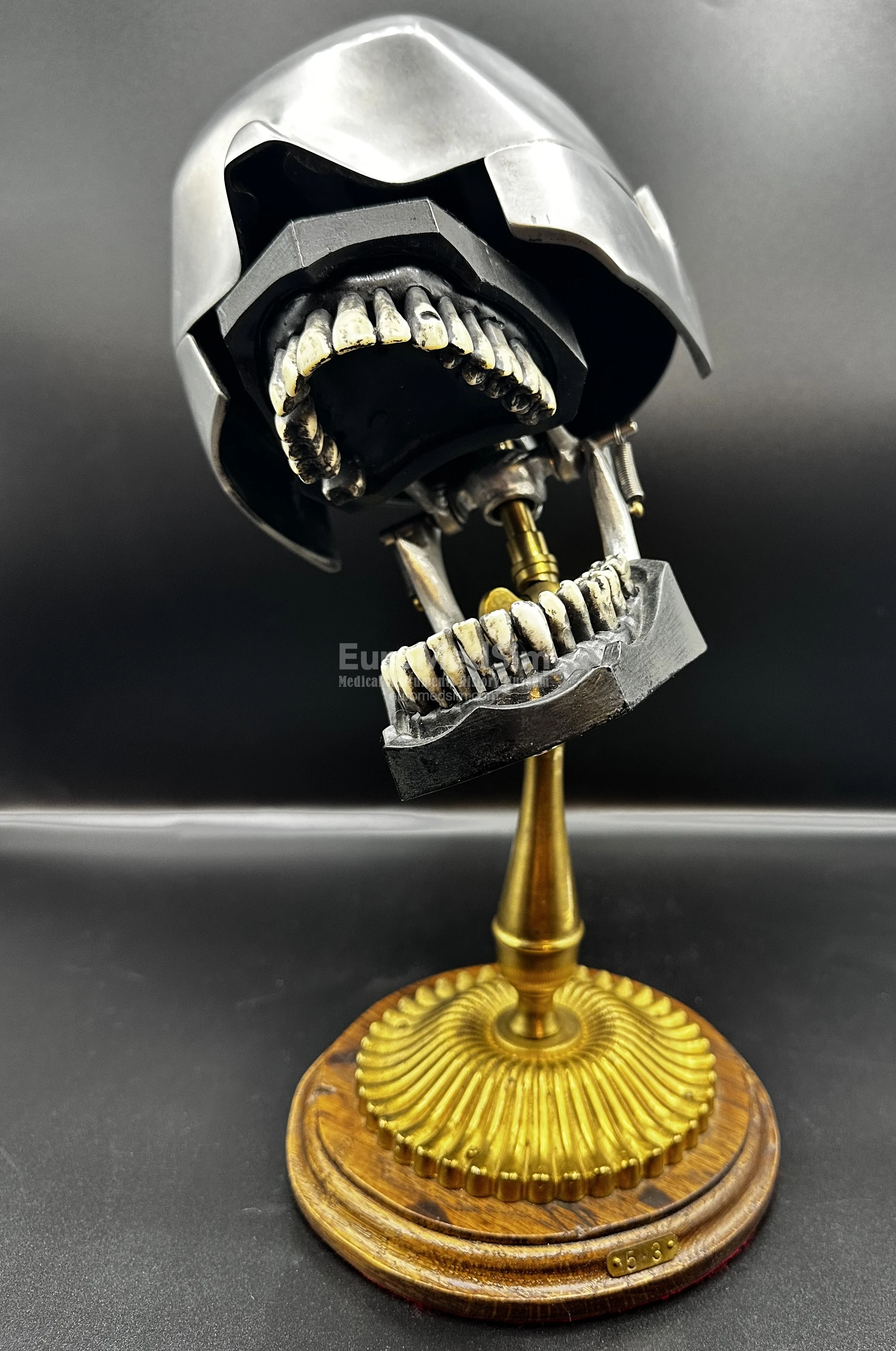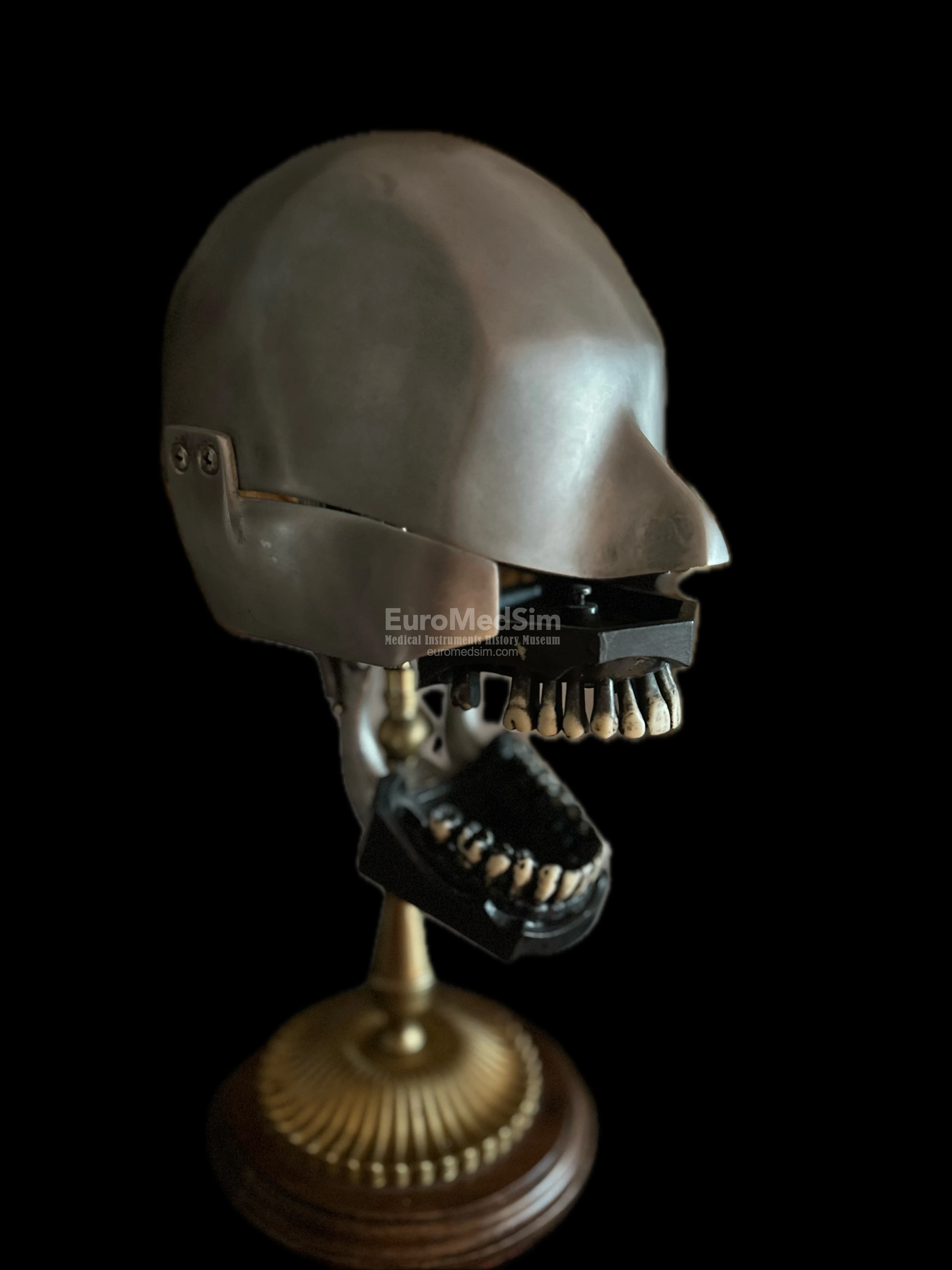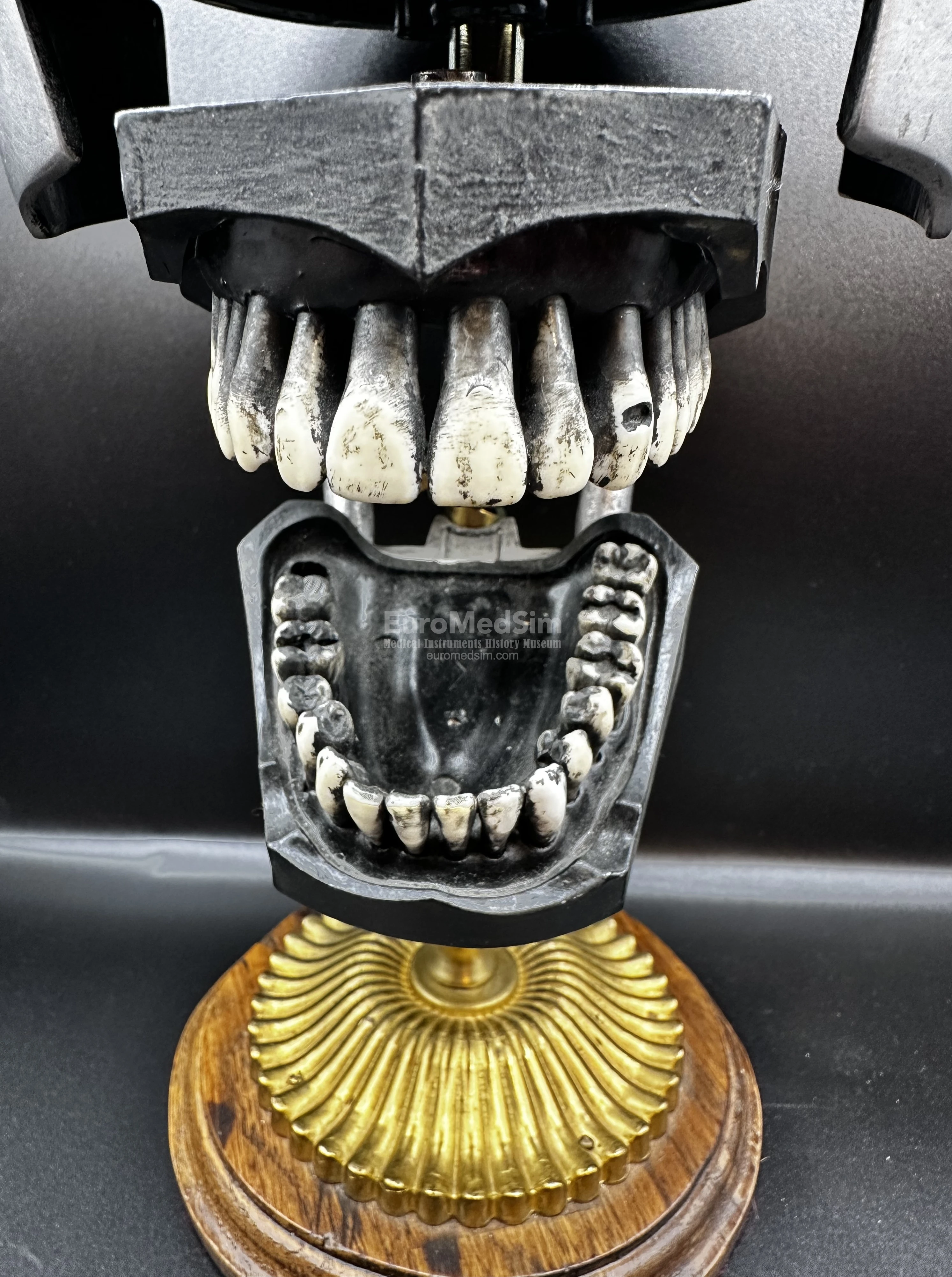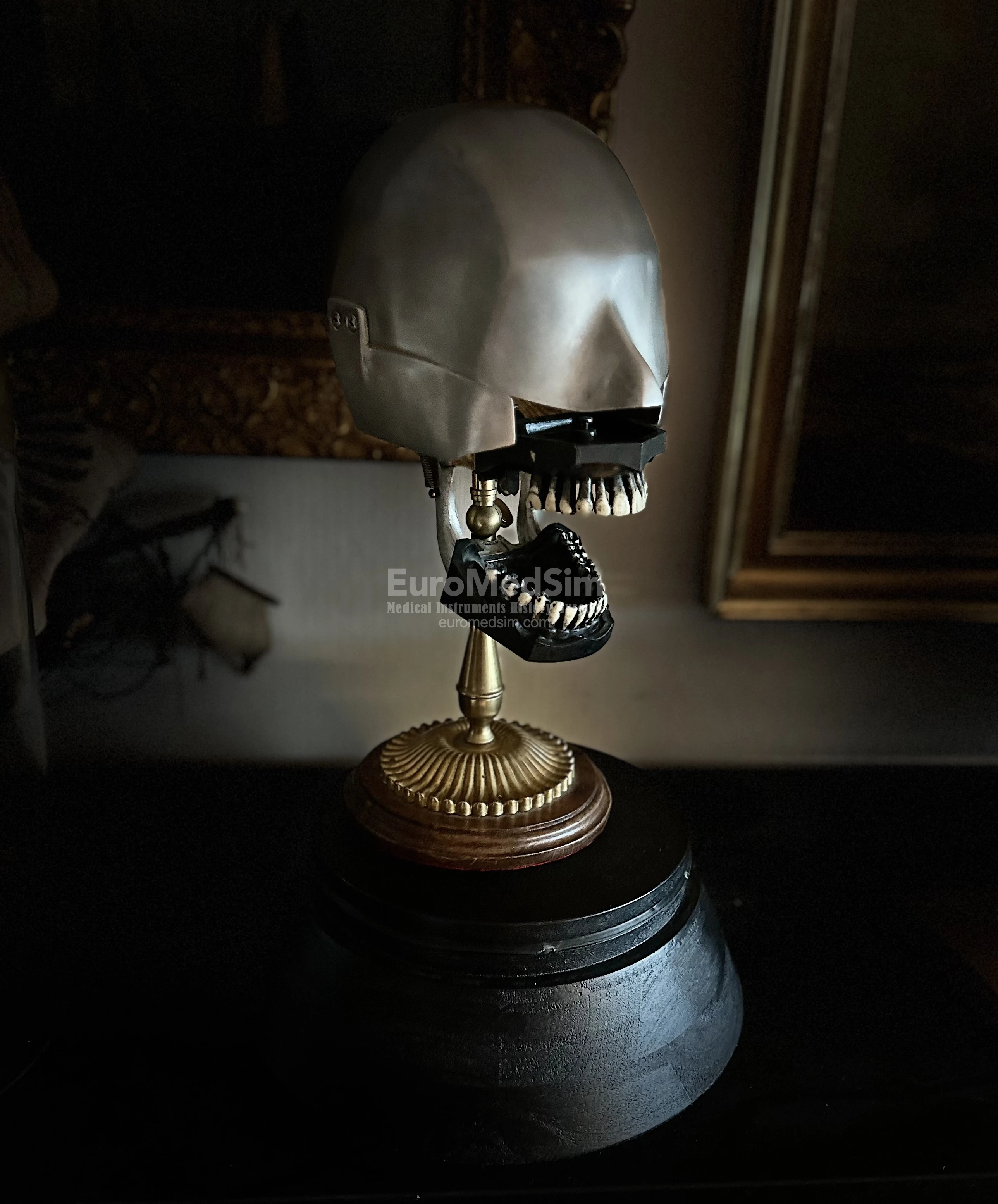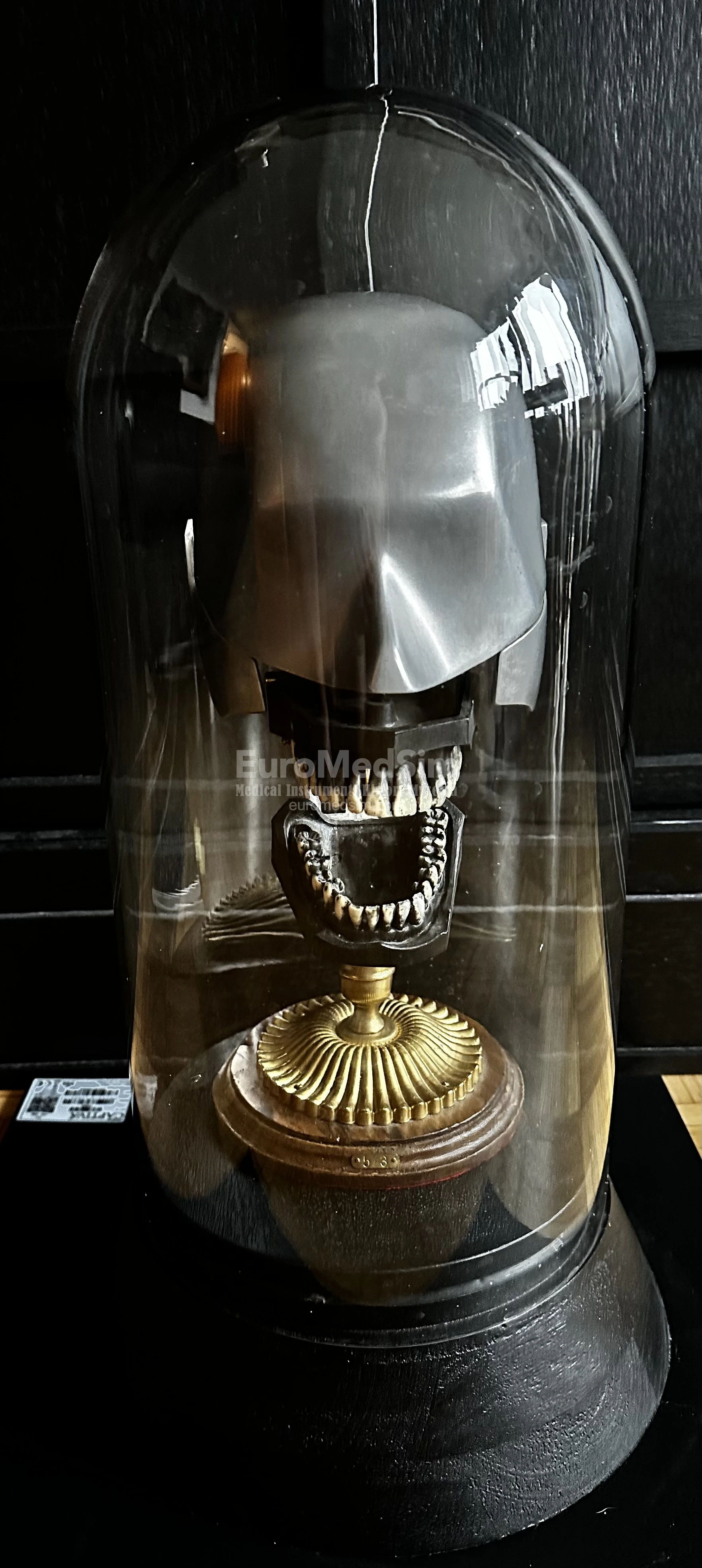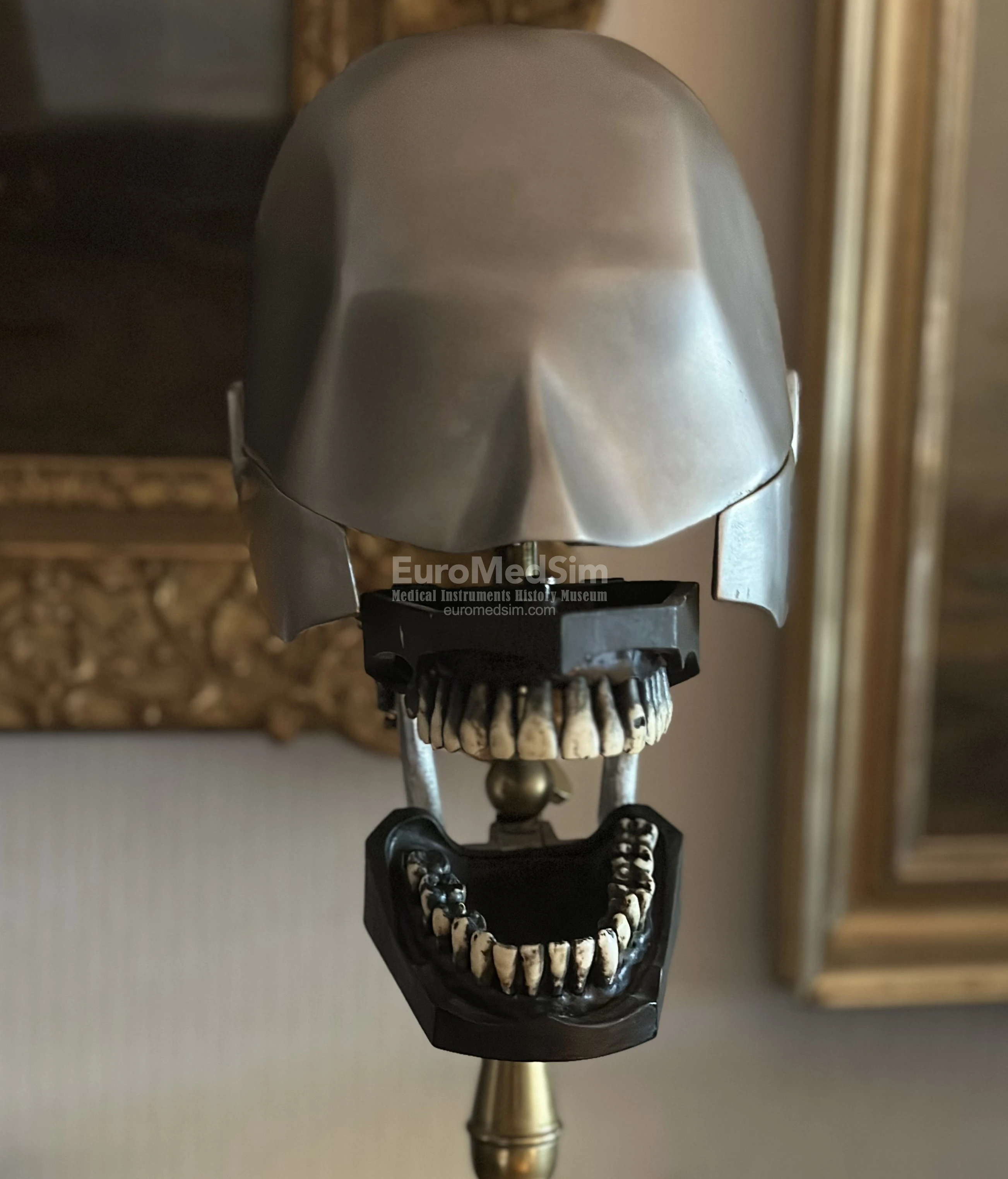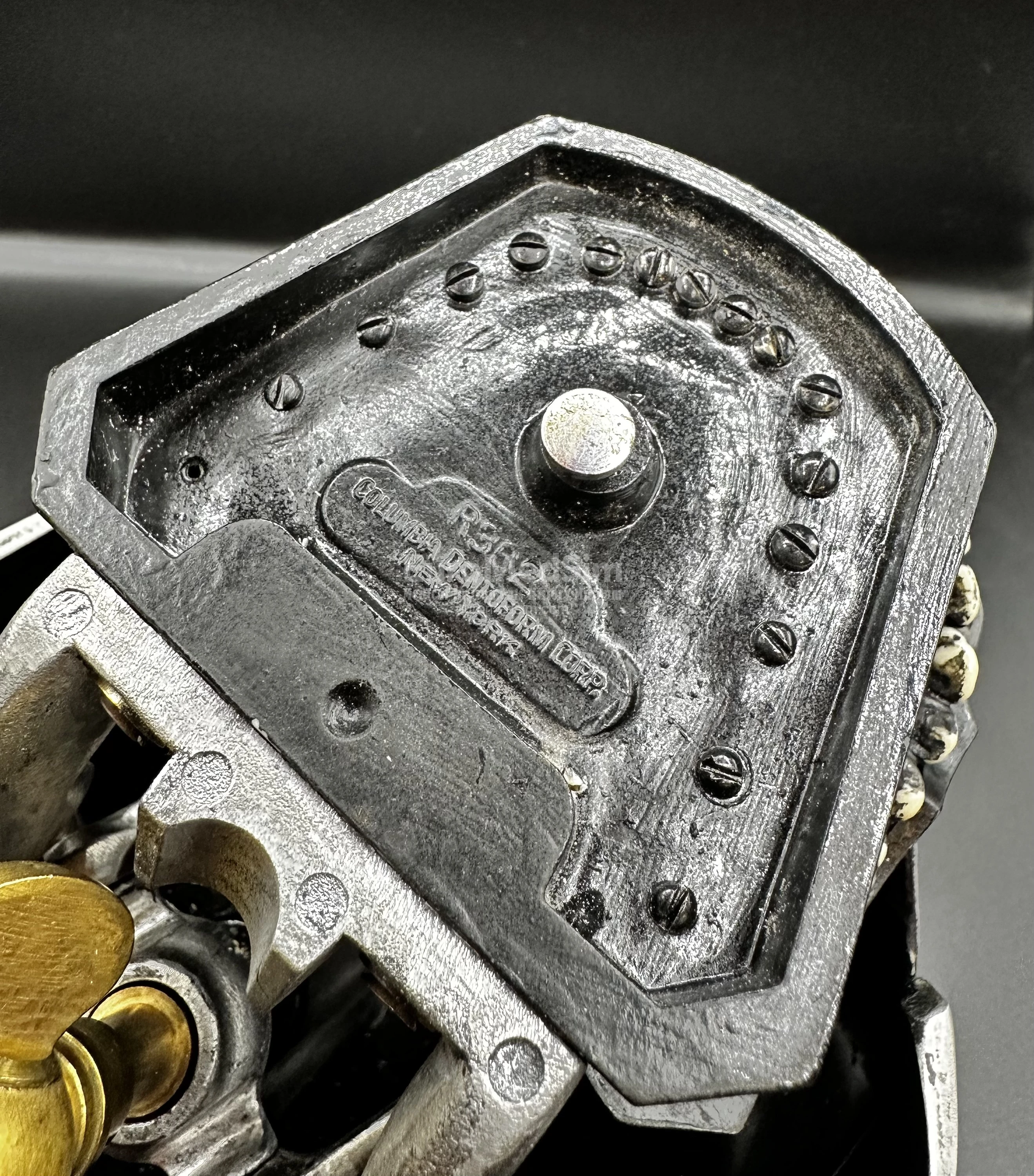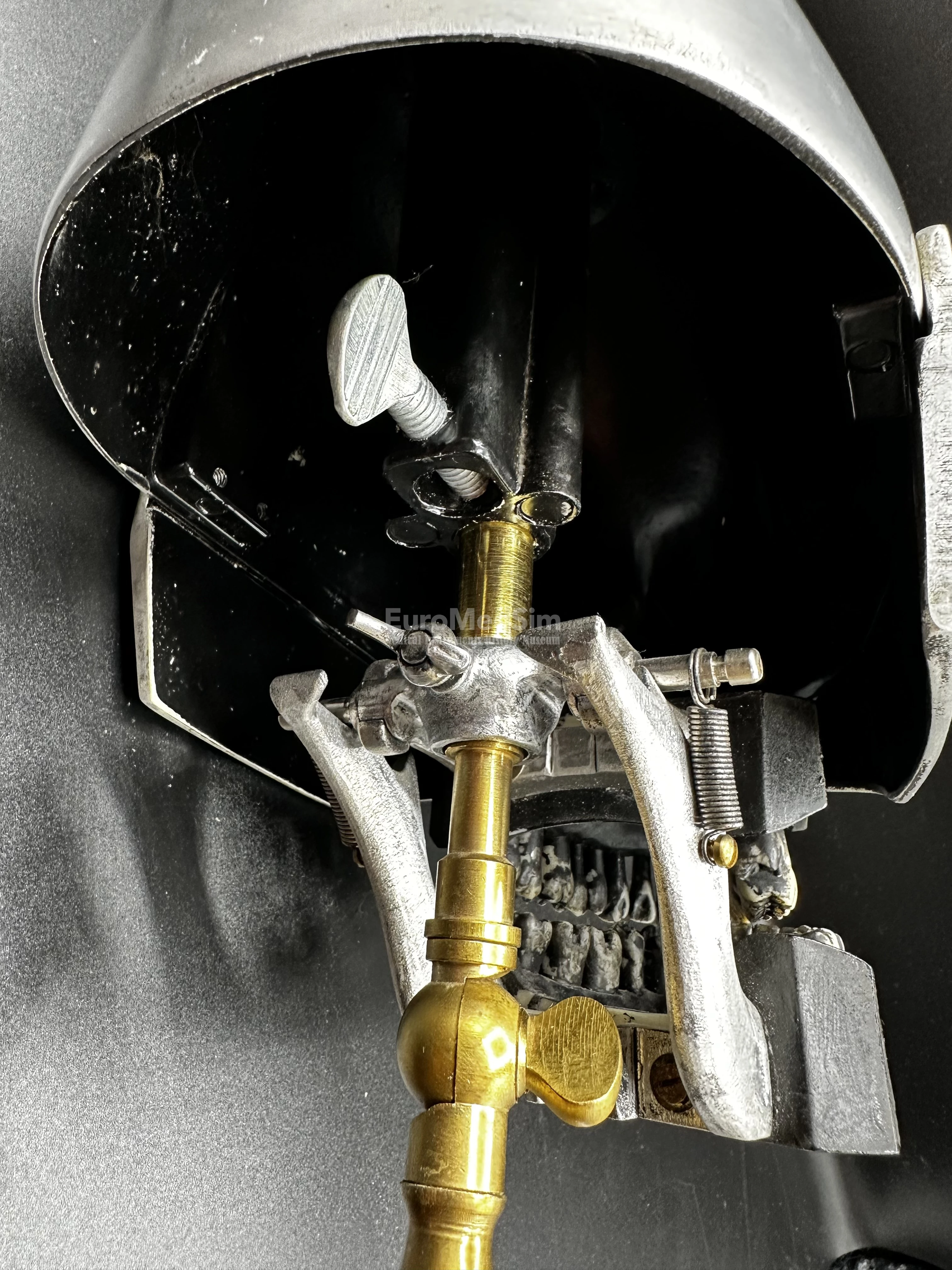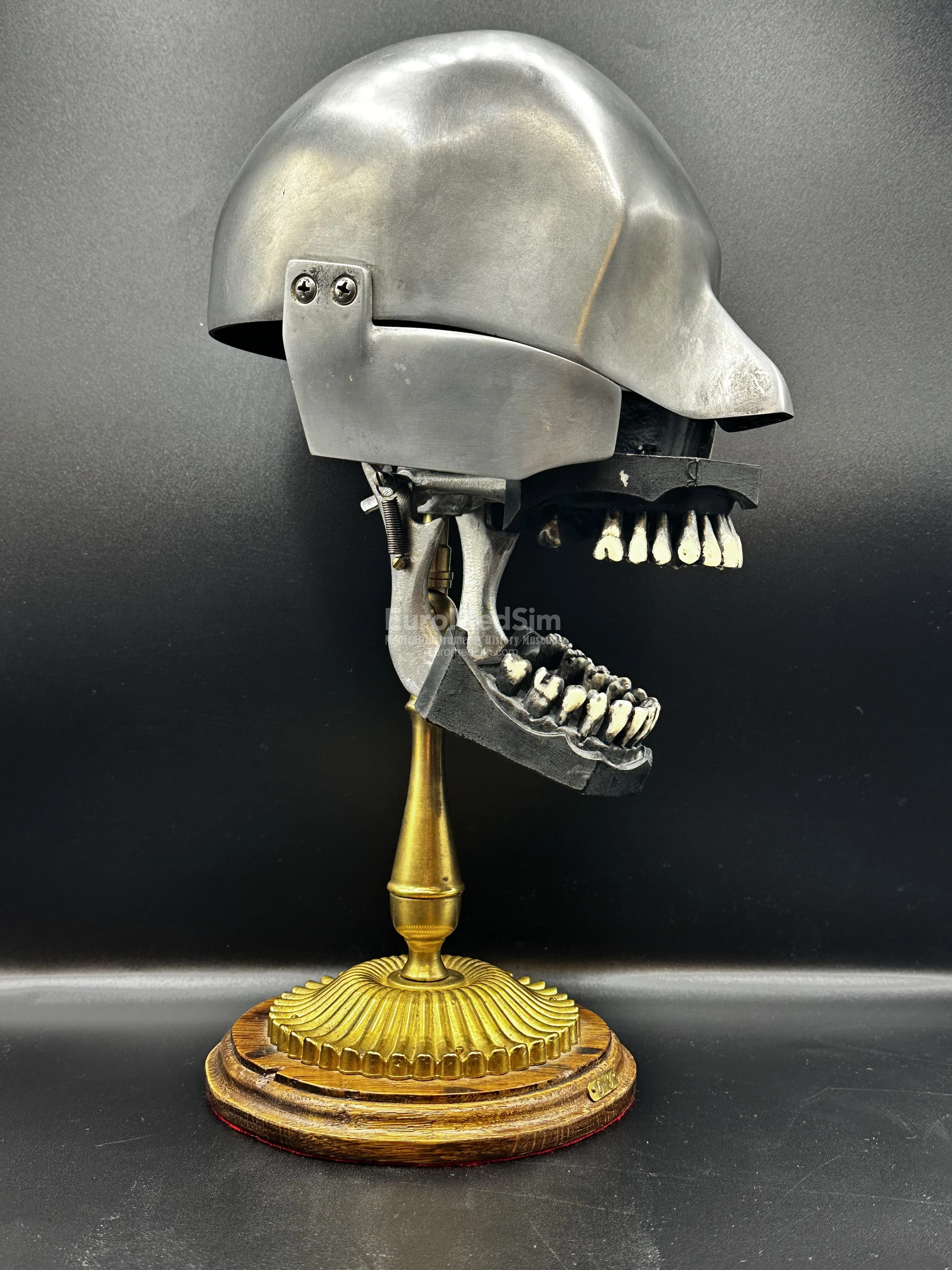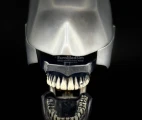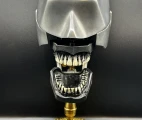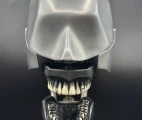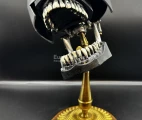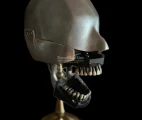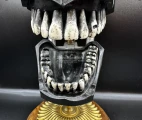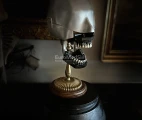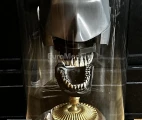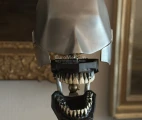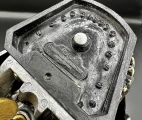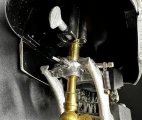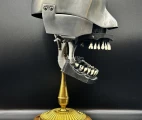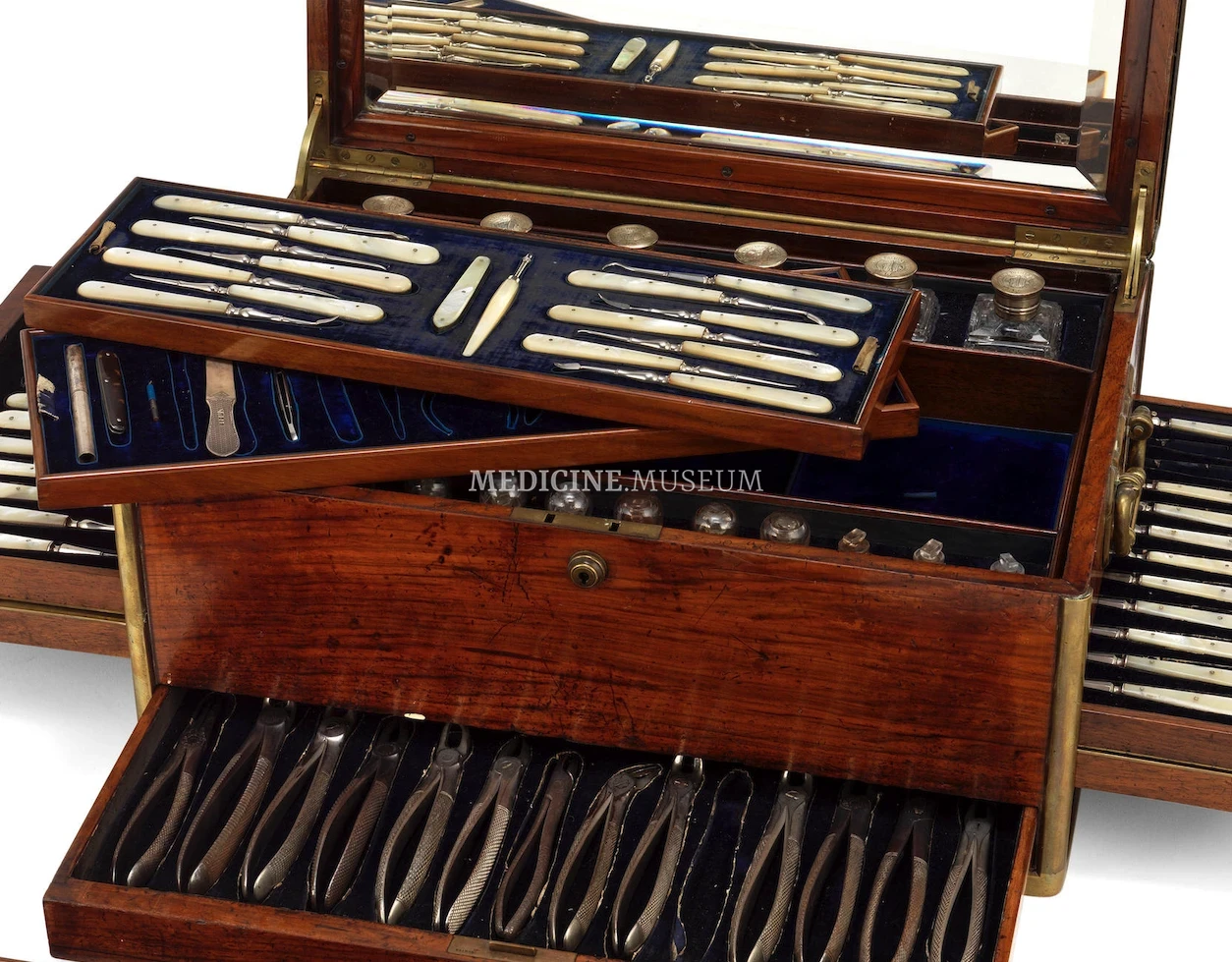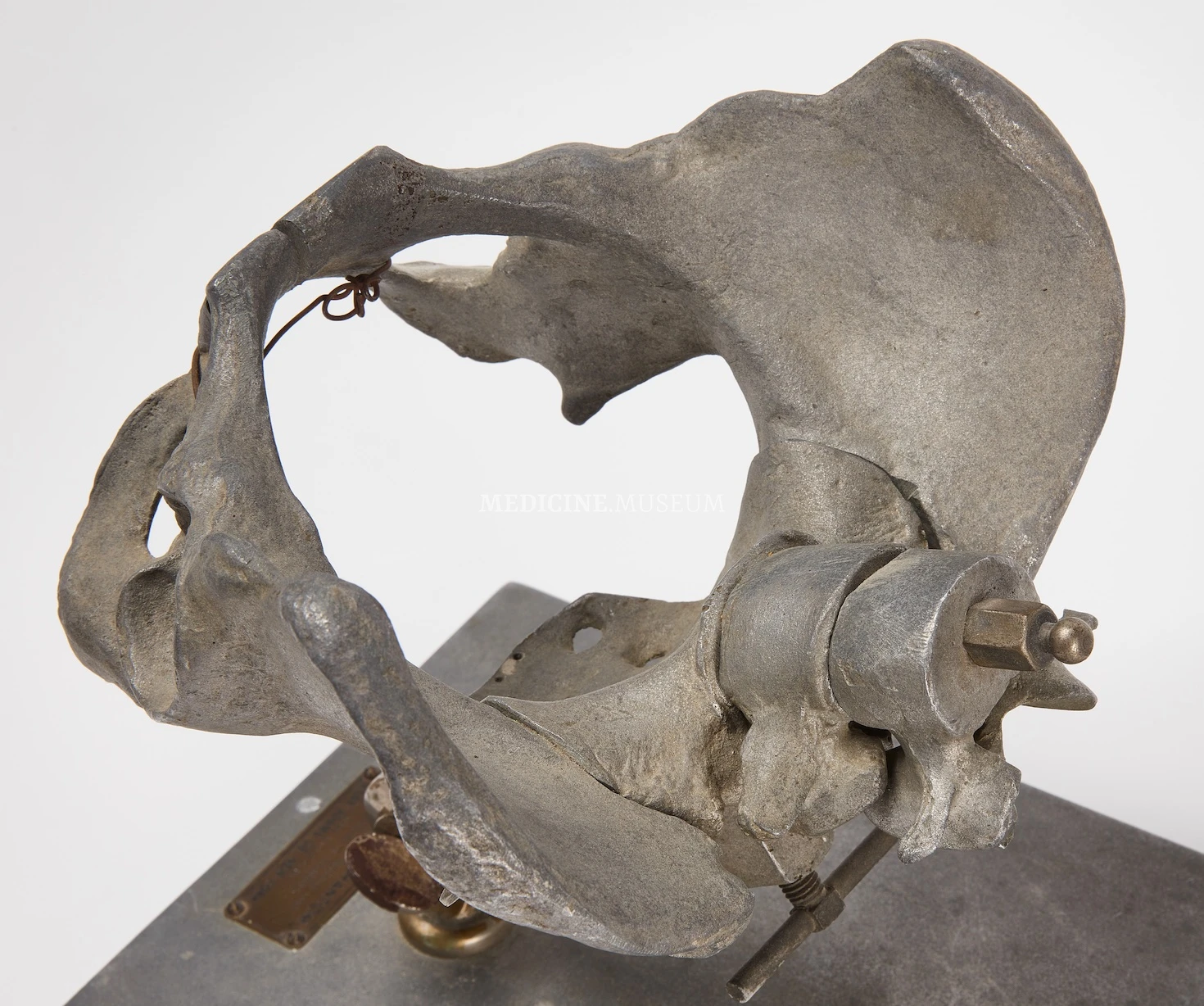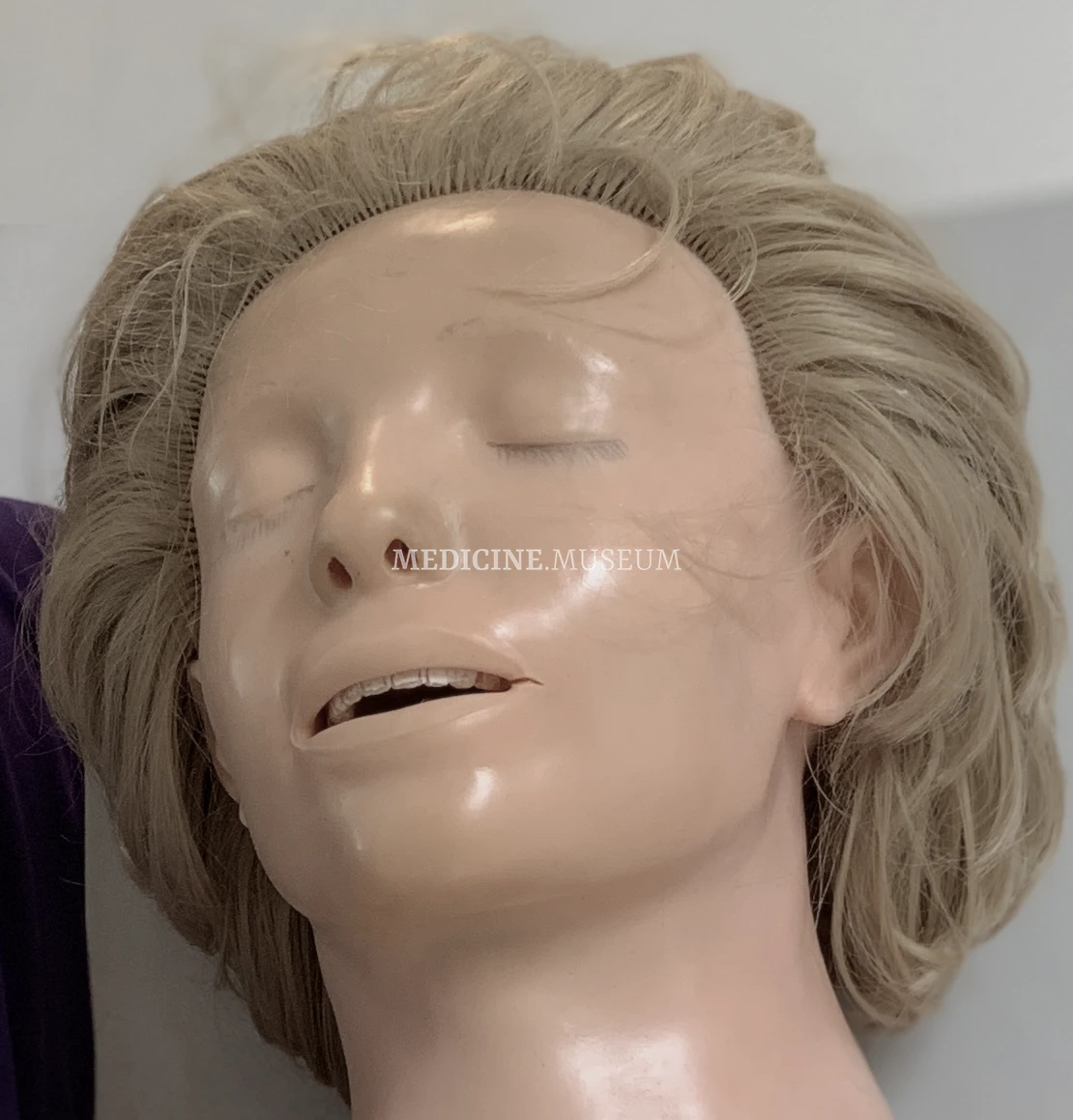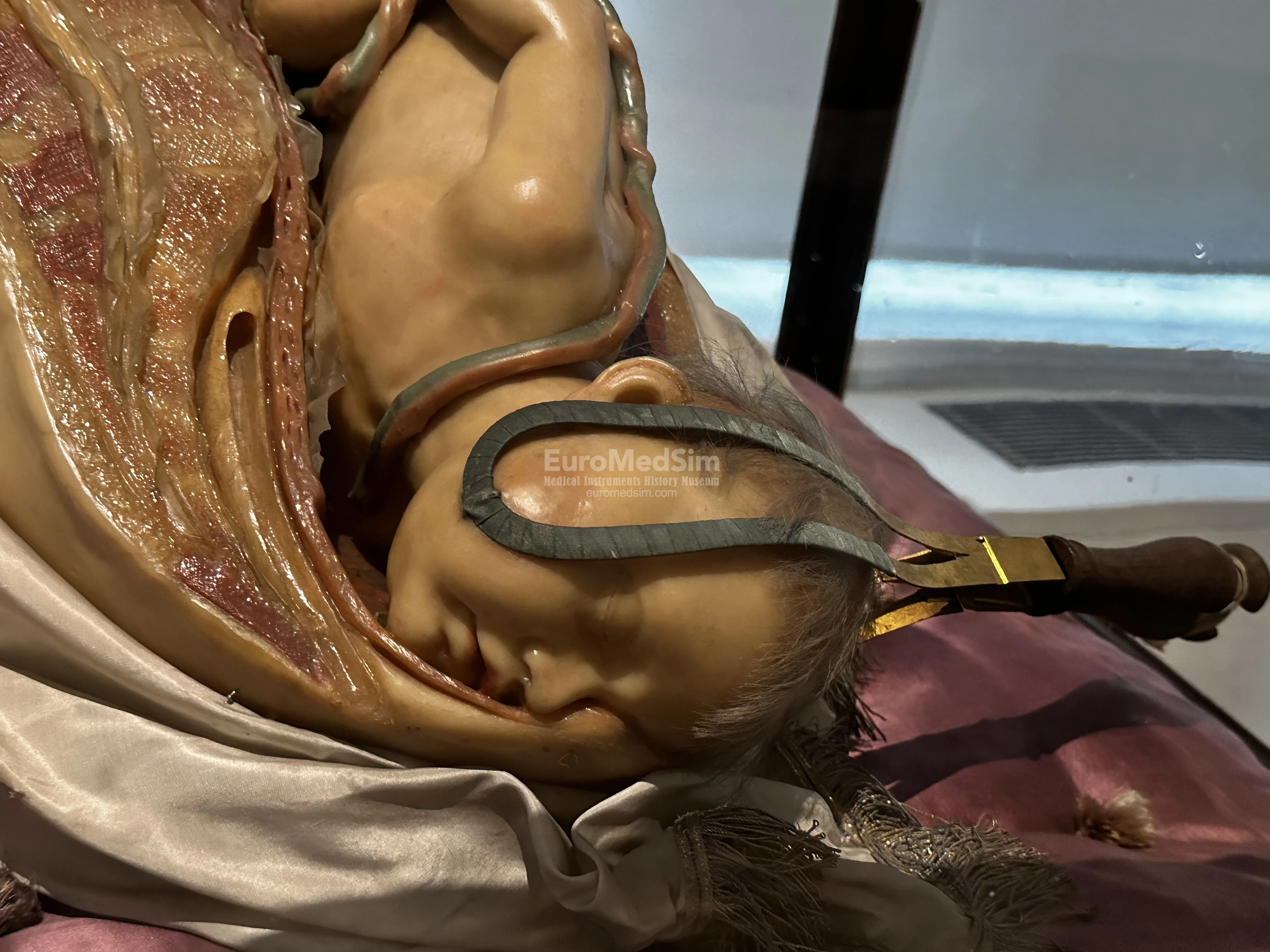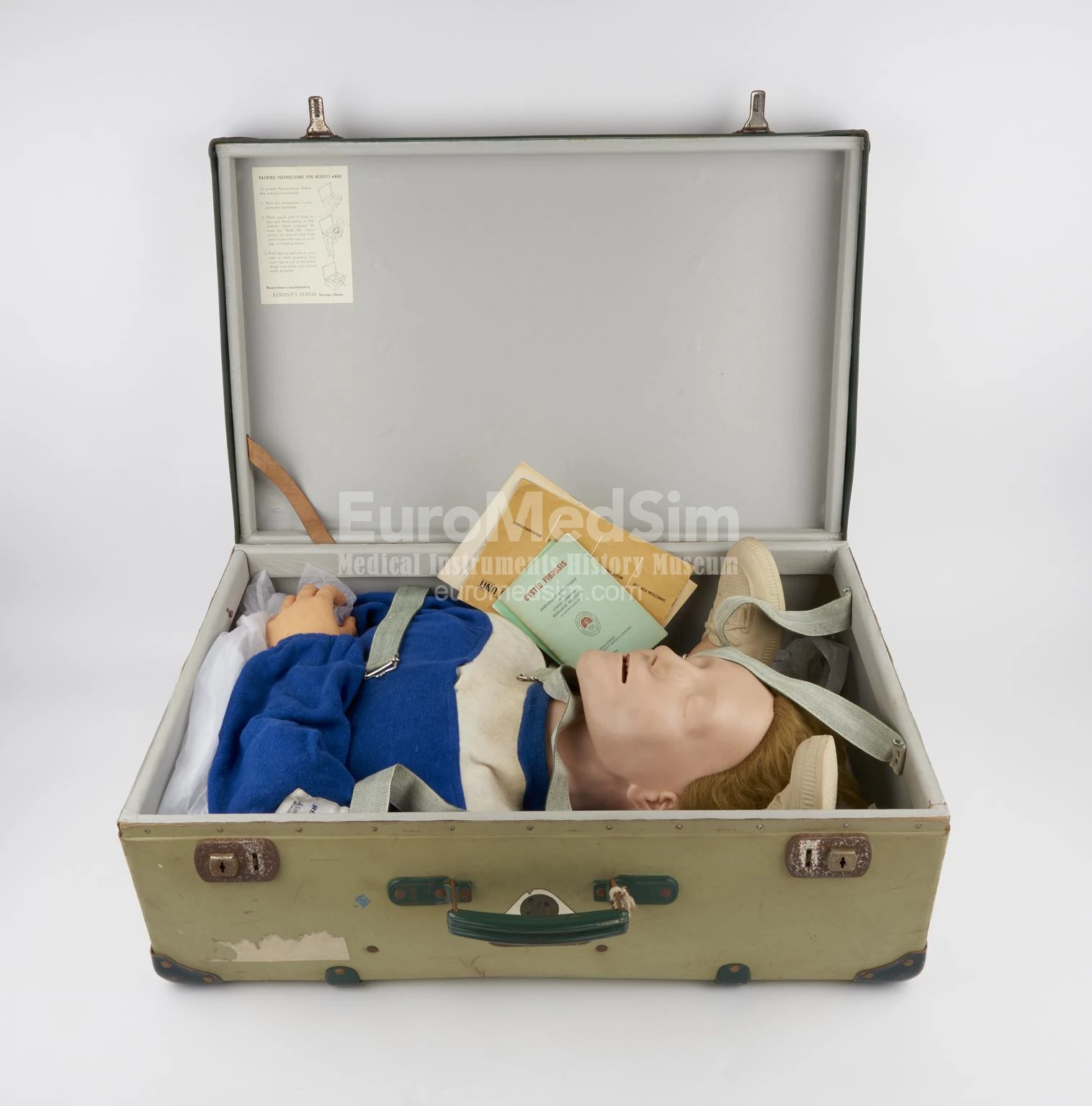Dental Phantom by Columbia Dentoform
A rare American dental training phantom head with an articulated mandible made of aluminium and plastic by Columbia Dentoform Corp., first half of the XX cent.
On the lower side of the phantom's mandibula is written: 'R362 / COLUMBIA DENTOFORM CORP. / NEW YORK.' The scull part of the head is made of aluminium, and the teeth and jaws of black and white hardened plastic, probably so called ivorine.
The phantom is mounted on the bronze pole and is housed in a glass dome. There are three adjustment screws seen from behind. The top screw fixes the upper metal part of the head. The middle screw fixes the combined metal and plastic part modelling upper and lower jaws. The lower screw allows to change the angle of the upper half of the rod, enabling articulation of the head.
Manufacturer
The company Columbia Dentoform Corp. was founded in 1917 by by Ben Spitzer, a Columbia University Engineering School graduate. Initially, the company provided X-ray equipment for dental offices, and later shifted its focus exclusively to the dental teaching models, simulators. These models are designed to realistically simulate the human oral cavity, allowing students to practice procedures of the dental treatment and hygiene tooth care before working on actual patients. Today, Columbia Dentoform is a part of the DentalEZ family of brands, it continues to develop and provide simulation products, maintaining its commitment to improving the instructional process and learning experience for dental students globally.
Provenance
From a British private collection, acquired through Curated Auctions, London at the auction 'Wonders of the Natural World & Other Curiosities' in July 2023.
References
Owen, Harry. Simulation in Healthcare Education. An Extensive History. Springer International Publishing, Switzerland, 2016. P.: XVI, 456. ISBN: 978-3-319-26575-9.
